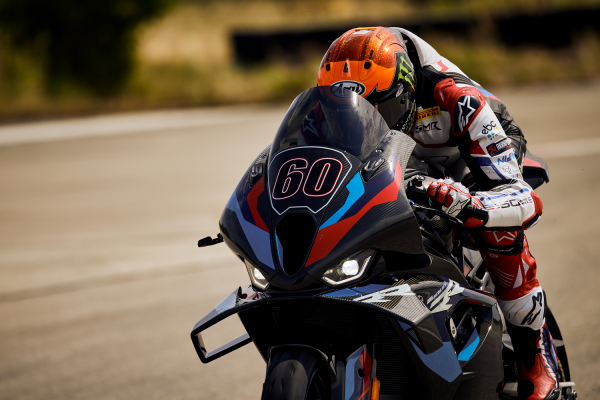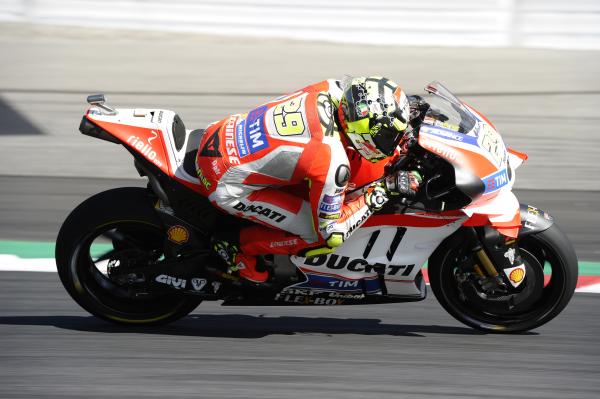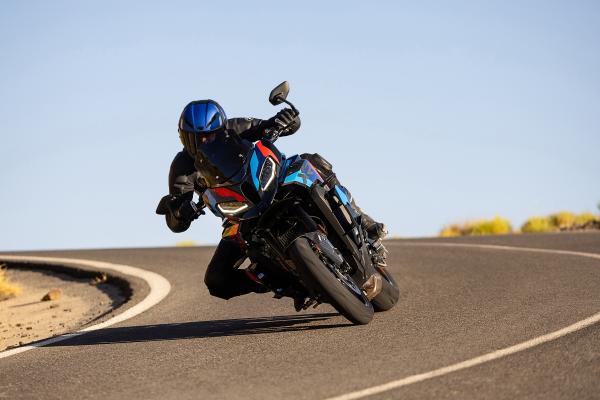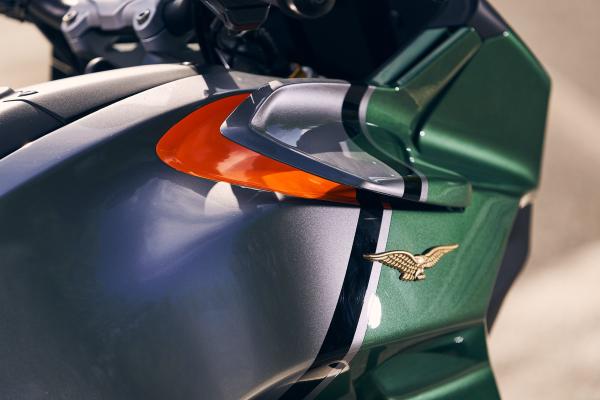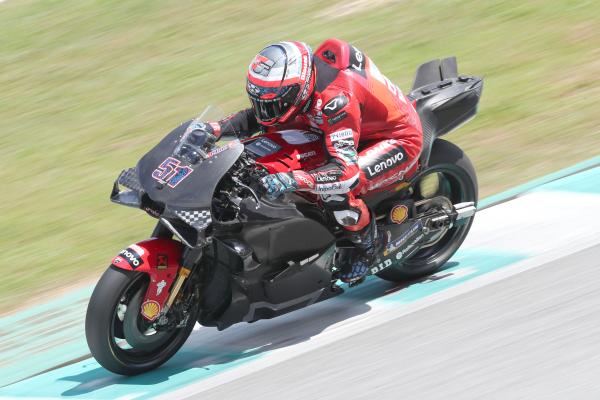New Active Aero Coming to BMW M 1000 RR
The BMW M 1000 RR, Bavaria’s flagship super sport machine, seems set to gain active aerodynamics, per a recent patent filing

Member for
54 years 8 monthsThe aerodynamic aspect of motorcycling has been revolutionised in the last 10 years or so, and BMW now looks to be taking it a step further.
It was Gigi Dall’Igna who kicked off the current craze for aerodynamic wings on motorcycles when he put some on the Ducati Desmosedici and 18 months later it won for the first time in five-and-a-half years (2016 Austrian Grand Prix).
Andrea Iannone, 2016 MotoGP Austrian Grand Prix.
Three years later, the Ducati Panigale V4 R was introduced, bringing both an engine and aerodynamics derived from MotoGP to the world of production bikes. By now, all of Ducati’s performance bikes have wings, and many of its competitors do, too.
BMW is one of the most extreme manufacturers when it comes to production bike wings. It brought them first a few years ago with the first edition of the M 1000 RR, and then evolved those into the huge fairing with the low, conjoined front wing we see on today’s machine. BMW also put wings on the M 1000 R naked bike, and even the M 1000 XR sports tourer.
Now, though, it looks to be taking motorcycle aero a step further, by making its wings move. In MotoGP, moveable aerodynamics are banned (unless you make a device which raises and lowers the rear suspension), but production bikes (in a weird way) aren’t subject to these restrictions. Instead, manufacturers of production motorcycles can more or less do what they want, and they won’t even be restricted by the regulations of the World Superbike Championship (should they wish to compete in it, which BMW evidently - by virtue of its having two factory teams, a factory test team, and one of the three best, and therefore most expesive, riders on the WorldSBK grid on its payroll - currently do), which allows moveable aerodynamics as long as the production bike from which the race motorcycle is derived is fitted with the same active aerodynamics.
This evidently presents an opportunity that BMW wants to take advantage of, as recent patent filings published by the Italian publication Motociclismo show a BMW sports bike with moveable wings.
Aerodynamic wing on Moto Guzzi V100 Mandello.
Active aero has been a thing in production cars for quite a while by now - we can all think of a Bugatti Veyron hard on the anchors and its rear wing increasing its angle of attack to increase downforce - but in motorcycles BMW’s system would be something new. The Moto Guzzi V100 Mandello has retractable wings that fold in and out of the tank area, but the BMW design would work in a different way to that, because the wings would be constantly working, meaning they wouldn’t fold away like the Mandello’s, but instead would actively change their angle on the bike.
2024 Ducati Desmosedici GP24 with ground-effect-generating lower fairing.
Particularly, BMW wants its wings to remain parallel to the ground at all times, including when the bike itself is leaning into a corner. By doing this, you remove the negative point of downforce aerodynamics on a motorcycle, which is that the force which pushes the bike into the ground when it is going in a straight line (i.e. when the bike is straight up-and-down) begins to push the bike towards the outside of the road when the bike is leant into a corner. MotoGP manufacturers now get around this using ground effect to counter-act the mid-corner outward push of the wings, but this wouldn’t work on a production bike because no one is going to be doing 62 degrees of lean on the B3192 without being put in the back of an ambulance afterwards.
BMW’s active aero proposal therefore makes sense, and is a potentially useful application of aerodynamics if you consider them to be of benefit on the road from a stability, and therefore safety, point of view, because the downforce generated would always be pushing the bike into the ground and creating more grip.
Whether the system actually makes it to production remains to be seen, and the same can be said for the additional cost they would put on the M 1000 RR.
Find all the latest motorcycle news on Visordown.
